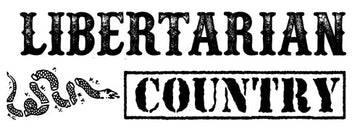A profit incentive motivates a business or entrepreneur to bring goods or services to the market and earn money or capital.
Famous economist Adam Smith said, "Individual ambition serves the common good."
A business earns profit after manufacturing, labor and other costs are tallied. For example, if it costs $2 for a company to bake a loaf of artisan bread and it's sold for $4, they have profited $2.
Without a profit incentive, a baker has no economic motivation to bake bread for customers. Even charitable organizations must make a profit to expand their operations.
Profit is incorporated into the final price of goods and services. It is the price consumers pay to keep products on shelves and services readily available. Where there is no incentive, there are often no products or services. Profit and the pricing system create an "invisible hand" that allows market economies to function efficiently.
Profit incentive leads to competition, which leads to research and development, bringing new and better products to the market. The profit incentive is, therefore, a necessary element in a capitalist economic system.
Profit Incentive in Disaster Areas
Sharply criticized, profiting in areas affected by natural disasters (floods, hurricanes, storms, tornados etc.) is often mocked as "price gouging." When the state prohibits price gouging, disaster areas often suffer detrimental shortages. Profit incentive moves goods and services to affected areas.
For example, if commercial trucking companies are halted by flood-damaged roads and unable to deliver water to a devastated area, a profit incentive for individuals willing to risk trudging through to provide water to needy people is created.
In a market economy, price is determined by several factors. One factor is an economic codependence called supply and demand. If the supply is severely reduced because of impacted trade routes and demand increases, the product price can skyrocket.
Because there is a higher profit incentive, a "price gouger" can purchase cases of water from unaffected areas, then move those goods to the disaster area and earn more money than they usually would receive from the same products.
Emotionally, people are turned off by this type of profit incentive. It has been criticized as taking advantage of people in dire need. Local and state governments have banned price-gouging in some areas. However, economists like Milton Friedman praised price-gougers because, without them, people suffered and may have died without the goods bought in by them.
Where there is a higher risk to managing a transaction (such as an individual risking getting stuck in a flood zone trying to deliver water to people), there is a higher profit and higher profit incentive.
Once a surplus of goods is delivered to a disaster area by those motivated by profit incentives, the price reduces and gradually returns to normal.
Closing
The profit incentive is a necessary element of a market economy. Without it, there is little or no research and development or motivation to create and compete. Therefore, new and better products and services do not reach customers who desire or need what businesses and entrepreneurs would offer.
For more information, please read 'What is Free Market Capitalism?'


